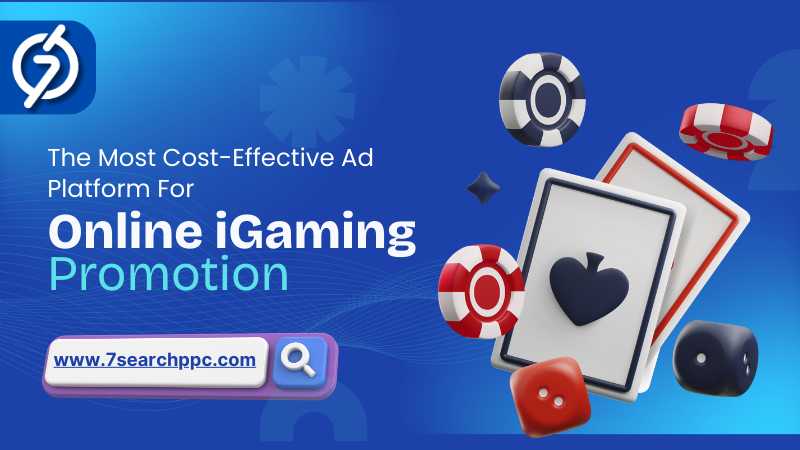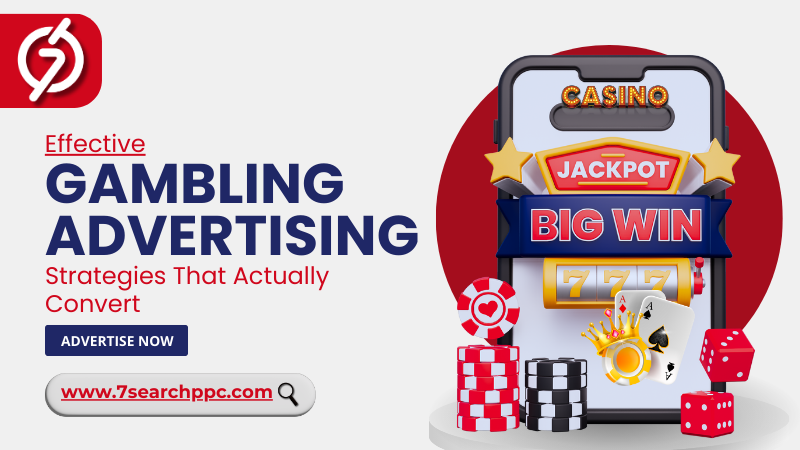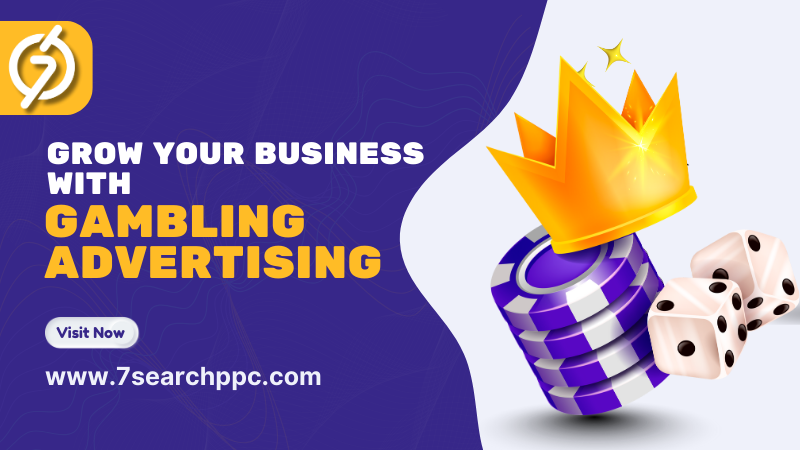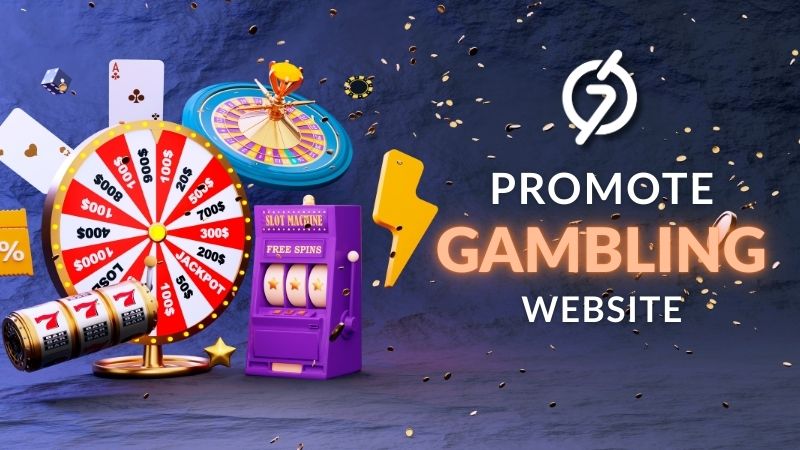
by mukeshsharma1106 | Aug 30, 2025 | Gaming
The iGaming industry continues to expand at a rapid pace, and with that growth comes one of the biggest challenges for operators and advertisers — scaling campaigns responsibly. Scaling online iGaming promotion requires more than just bigger ad spends or wider reach. It demands precision, compliance awareness, and strategies that keep conversions high without crossing legal or ethical boundaries.
In this article, we’ll explore practical expert tips that show how online iGaming promotion campaigns can grow effectively while staying compliant with industry regulations.
Why Scaling iGaming Promotion Feels Risky
For many operators, scaling their campaigns feels like walking on a tightrope. On one side is the need to attract new players and increase deposits, while on the other side lies the risk of compliance penalties, ad bans, or even reputational damage.
Most challenges arise because:
- Ads may unintentionally target restricted audiences.
- Promotions are often structured in ways that raise red flags with regulators.
- Scaling too quickly can dilute personalization and weaken engagement.
If campaigns focus only on speed and volume, they may appear aggressive or misleading, which is the quickest way to break compliance rules.
Compliance and Growth Can Coexist
The biggest misconception in online iGaming promotion is that compliance slows growth. In reality, compliance makes growth sustainable. By designing campaigns that respect regulations while appealing to the right players, operators set themselves up for long-term conversions rather than short-lived spikes.
A balanced strategy ensures that the campaign scales steadily and keeps trust intact, which is just as important as driving clicks.
iGaming Promotion Strategies That Scale Safely
Audience Segmentation with Compliance in Mind
Scaling is not about showing ads to everyone possible. It is about reaching the right people. Segmenting audiences based on age, location, and intent is critical. Using filters that exclude minors or restricted geographies not only keeps campaigns compliant but also ensures ad spend is used efficiently.
Transparency in Messaging
Players today are wary of exaggerated claims. Clear, transparent ad copy that highlights bonuses or offers in straightforward terms has shown higher conversions. For example, stating “Deposit $20 and get 20 free spins” performs better than vague claims like “Win Big Instantly.” Transparency builds trust and avoids regulatory trouble.
Diversifying Channels for Stability
Relying too much on one channel can be risky when scaling. A mix of programmatic ads, search campaigns, and native placements ensures stability. As suggested in broader insights on iGaming advertising approaches, using multiple channels creates more natural user touchpoints while minimizing overexposure in a single space.
Strong Creative Personalization
Generic ads become less effective when scaling. Online iGaming advertisements that speak directly to player interests — such as poker enthusiasts vs. slot players — tend to generate better engagement. Personalization prevents campaigns from feeling spammy, which often triggers compliance concerns.
Continuous Testing Instead of Aggressive Expansion
Scaling should be treated as an iterative process. Testing ad variations on smaller groups before scaling across markets allows teams to catch compliance issues early. Once messaging and creatives prove effective, budgets can be increased with confidence.
iGaming Marketing: Balancing Regulations and Creativity
The art of iGaming marketing is blending creativity with responsibility. Ads that showcase excitement and rewards while still respecting limits tend to perform best. For example:
- Avoid high-pressure language like “Bet now or lose your chance.”
- Focus on entertainment value instead of guaranteed wins.
- Use visuals that comply with cultural and regulatory sensitivities.
Marketing teams that find this balance often enjoy longer campaign lifespans, fewer penalties, and stronger brand loyalty.
Compliance-Friendly Scaling Tactics That Work
Retargeting With Care
Retargeting is a powerful tool in scaling campaigns, but it must be done carefully. Instead of bombarding users with repeated generic ads, compliance-friendly retargeting shows tailored messages such as bonus reminders for games they previously explored. This approach builds engagement without appearing intrusive.
Clear Bonus Terms
When promotions involve deposits, bonuses, or free spins, clear terms are essential. Ambiguous fine print is one of the biggest compliance risks in iGaming promotion. Clear terms make offers more attractive and trustworthy while reducing the risk of regulator pushback.
Building Data-Backed Campaigns
Scaling without data leads to wasted spend. Successful campaigns monitor not only click-through rates but also deposit rates, churn, and repeat activity. Data insights reveal where campaigns may unintentionally cross compliance lines, allowing timely adjustments.
Online iGaming Advertisements: Scaling the Right Way
Online iGaming advertisements that scale effectively do not rely on flashy tactics alone. They use:
- Smart segmentation for relevant audiences.
- Data to back every creative decision.
- Cross-channel consistency for stable performance.
- Compliance checks at every level of campaign execution.
This creates campaigns that grow steadily without risking sudden bans or costly compliance fines.
Case Insight: Why Safe Scaling Pays Off
One European operator learned that scaling recklessly by increasing budgets overnight led to more regulatory warnings than deposits. After restructuring their strategy around gradual scaling, compliance filters, and transparent ads, the same operator saw a 30 percent increase in deposits within three months — without a single compliance issue.
This case highlights that slow, careful scaling is actually faster in the long run because it avoids the disruptions of campaign takedowns or financial penalties.
The Role of Technology in Scaling iGaming Promotion
Ad tech platforms today make it easier to scale safely. Tools that automate age filtering, geography restrictions, and creative approvals help brands stay compliant while expanding. Platforms that allow cross-channel campaign management also reduce the risk of inconsistencies that might break compliance rules.
For anyone starting their scaling journey, it is helpful to first launch a test campaign. This provides firsthand data and experience in a low-risk environment before scaling up.
Looking Ahead: The Future of Scaling in iGaming Marketing
The future of online iGaming promotion will demand more accountability and transparency. Regulators are tightening standards, but that does not mean growth is out of reach. In fact, operators who focus on compliance-friendly scaling are more likely to sustain growth over time.
The brands that will thrive are those that use personalized ads, respect regulations, and continuously adapt strategies as markets evolve. Scaling without breaking compliance is not just possible, it is the smartest way forward for long-term success.
For more insights into structured strategies, you can explore resources on online iGaming promotion, where proven methods are detailed.
Final Thoughts
Scaling online iGaming promotion campaigns is about balance. Growth should not come at the cost of compliance, and compliance does not have to slow down growth. By focusing on segmentation, transparency, creative personalization, and iterative testing, campaigns can scale effectively and sustainably.
Smart operators understand that sustainable success comes not from shortcuts, but from strategies that respect both players and regulations. With the right approach, scaling can become not just safe, but profitable for the long run.

by mukeshsharma1106 | Aug 28, 2025 | Gaming
When people think of gambling ads, they often picture flashy banners, bonus offers, and catchy slogans designed to bring players into the game. But behind every successful ad is a strict framework of rules and compliance standards that decide whether that ad even makes it online in the first place. For advertisers, compliance is not just a formality. It is a critical element that shapes trust, user safety, and the long-term success of any campaign in the gambling industry.
The gambling sector is one of the most tightly regulated industries in the world. Every market has unique laws to ensure fairness, responsible messaging, and consumer protection. Without compliance, even the most creative online gambling advertisements risk rejection, penalties, or complete brand shutdown.
This article takes a deep dive into why compliance matters so much in gambling advertising strategies, how it influences campaign performance, and what advertisers should focus on to run successful, sustainable campaigns in 2025 and beyond.
Why Many Gambling Ads Fail
Despite big budgets and smart marketing teams, many gambling promotion campaigns underperform. Often, it is not because the ads are poorly designed but because they fail to align with compliance guidelines. Regulators across the globe are quick to ban ads that look misleading, target vulnerable groups, or make unverified claims.
- Ads that promote gambling as a “guaranteed way to make money” are instantly flagged.
- Campaigns that target underage users with flashy visuals can lead to license suspensions.
- Unclear disclaimers about risks result in trust loss among users.
This is why compliance is not a hurdle but rather a tool for building campaigns that connect with the right audience in the right way.
If you are unsure where to start, it helps to review resources on how to create an effective gambling ad campaign. This way you are not only focusing on creative angles but also ensuring they align with regulatory best practices.
Compliance in Gambling Promotion: More Than Just Rules
When we talk about gambling promotion, compliance covers more than just following a checklist. It is about ensuring advertising practices protect vulnerable players, communicate transparently, and reflect the legal boundaries of each market.
Key Aspects of Compliance
- Age Restrictions – Ads must never target or appeal to minors.
- Responsible Messaging – Campaigns need to include disclaimers about gambling risks.
- Clear Bonus Information – If an offer says “free spins,” the terms and conditions must be clear and visible.
- Data Protection – GDPR and other privacy regulations demand secure data handling in user targeting.
By adopting these standards, advertisers not only stay safe from penalties but also build campaigns that are sustainable and more respected in the eyes of both players and regulators.
The Market Perspective: How Compliance Impacts ROI
There is a common misconception that compliance slows down advertising or restricts creativity. In reality, compliant gambling advertising drives better results over time.
- Higher Trust = Higher Conversions – Players are more likely to engage with ads that feel safe, transparent, and authentic.
- Reduced Risk of Shutdowns – Non-compliant campaigns can lead to blocked ads, suspended accounts, or even blacklisting on major platforms like Google and Facebook.
- Stronger Long-Term ROI – Instead of burning money on campaigns that get taken down, compliance ensures your investment delivers sustainable returns.
This is why advertisers are increasingly viewing compliance as a growth driver rather than a barrier.
How Gambling Advertising Differs Across Regions
Not every country looks at gambling the same way. This makes compliance especially tricky for international campaigns.
- Europe – Markets like the UK and Spain have strict advertising standards. Ads must include responsible gambling messages, and operators need proper licenses.
- United States – Each state regulates gambling differently. What works in New Jersey may be illegal in Utah.
- Asia-Pacific – Some regions allow gambling in limited formats, while others ban it outright.
Understanding these differences is essential for anyone running online gambling advertisements on a global scale. A single mistake in messaging can mean heavy fines or even a permanent ban from that market.
Balancing Compliance and Creativity
The good news is compliance does not mean giving up on creativity. Smart advertisers are finding ways to balance both by:
- Using engaging visuals that attract attention without being misleading
- Building trust-driven copy that highlights fun and entertainment rather than guaranteed profits
- Including clear calls-to-action while openly displaying disclaimers
- Testing campaigns on smaller budgets before scaling up
If you want to see how compliance-friendly strategies can be executed effectively, you can launch a test campaign and analyze real-time performance while staying within safe limits.
Why Advertisers Who Ignore Compliance Struggle
From years of observing the market, one pattern is clear. Advertisers who treat compliance as an afterthought tend to struggle with retention and brand reputation. They might gain short-term clicks but lose credibility once players feel misled.
In contrast, those who integrate compliance into their strategy from the start enjoy smoother approval processes, better ad placements, and stronger engagement from the right audience. It is not about chasing every click but about building a reputation that attracts loyal players.
Online Gambling Advertisements in 2025: What to Expect
The landscape of online gambling advertisements is evolving fast. Here are some compliance-driven trends to watch:
- Stricter AI Monitoring – Platforms are now using AI to detect misleading claims or non-compliant ad formats instantly.
- More Emphasis on Transparency – Clear terms, visible disclaimers, and honest messaging will no longer be optional but mandatory.
- Increased Collaboration with Regulators – Brands that proactively work with regulators will find it easier to scale across markets.
- Shift Toward Safer Platforms – Networks specializing in regulated gambling ads will grow in demand because they already understand compliance challenges. One example is platforms like gambling ads networks that provide ad solutions built for iGaming promotion needs.
Compliance as a Trust-Building Tool
At the end of the day, compliance is not about red tape. It is about building trust. Players who feel safe and respected are far more likely to stick with your brand. Regulators who see you taking responsibility will open more doors for you to advertise freely.
This is why the future of gambling promotion is not only about creativity and targeting but also about respecting the framework that allows this industry to grow responsibly.
Conclusion: Turning Compliance into an Advantage
Compliance in gambling ads is often seen as a challenge, but the reality is different. It is an opportunity to create stronger connections with players, protect your brand, and ensure long-term growth in a market that is constantly under scrutiny.
By adopting compliance-first strategies, advertisers can:
- Avoid costly penalties
- Build more sustainable campaigns
- Strengthen player trust
- Secure long-term ROI
If your strategy feels stuck between creativity and rules, start by focusing on compliance as your foundation. Once you build a structure that regulators trust, your creativity will have more room to shine.

by mukeshsharma1106 | Aug 26, 2025 | Gaming
Gambling advertising is a fast-growing area of digital marketing. From television spots to social media campaigns, the ways in which gambling brands reach people have multiplied in recent years. But as these campaigns expand, so does the conversation around their ethical boundaries. The question is not only how effective a gambling ad campaign can be, but also how it balances promotion with responsibility.
In today’s market, there is a thin line between encouraging responsible entertainment and unintentionally contributing to harmful behavior. This article takes a close look at the challenges, practices, and ethical considerations that shape gambling advertising today, while also sharing some insights on how advertisers can promote responsibly.
Why Ethics Matter in Gambling Marketing
When it comes to gambling marketing, the stakes are high for both businesses and consumers. On one hand, brands want to build awareness and encourage participation. On the other hand, people exposed to these ads may include vulnerable groups, such as young adults or those struggling with addiction.
The ethical question lies in how campaigns are designed. Should ads highlight only the thrills of winning, or should they also acknowledge the risks? Most successful gambling promotion strategies today try to balance the fun of participation with reminders about responsible play.
Read more on gambling advertising practices to understand how the industry is shaping this balance.
When Advertising Crosses the Line
One of the main concerns is that gambling advertisement campaigns can sometimes glamorize gambling to the point where risks are ignored. This can lead to criticism from regulators, advocacy groups, and the public.
Some of the most debated issues include:
- Targeting young audiences through appealing visuals or influencers
- Using language that promises quick financial success
- Failing to provide clear messages about responsible play
Crossing these lines not only damages brand credibility but can also lead to strict penalties or bans in certain regions.
What Responsible Gambling Promotion Looks Like
Not every gambling ad is harmful or misleading. In fact, many companies are working hard to redefine how they promote their services. A responsible gambling promotion often includes:
- Clear disclaimers about age restrictions
- Visible messages about responsible play
- Information about support services for problem gambling
- Campaign designs that avoid making gambling seem like a guaranteed way to earn money
When done right, these strategies not only meet ethical standards but also help brands build long-term trust with their audiences.
For a deeper look at building an effective gambling ad campaign, you can explore strategies that combine creativity with responsibility.
Balancing Business and Responsibility
It is possible for gambling advertisers to achieve results without stepping over ethical lines. Campaigns that focus on entertainment rather than financial promises resonate better in the long term. Similarly, brands that openly discuss responsible play are often seen as more trustworthy.
If you are planning to run campaigns in this space, the best way forward is to launch a test campaign and measure how different approaches perform. Testing allows marketers to fine-tune messaging that both engages audiences and meets ethical expectations.
You can start by exploring platforms where you can launch a test campaign and track the results responsibly.
Global Perspective on Gambling Advertisement Rules
Different regions have different rules when it comes to gambling advertisement campaigns. For example:
- In the UK, gambling ads must include warnings about responsible play and cannot target underage audiences.
- In the US, regulations vary by state, with some requiring clear disclaimers and others limiting advertising altogether.
- In parts of Asia, gambling ads are highly restricted and often only allowed for state-run lotteries.
These variations make it important for advertisers to stay updated with local rules before running any campaign.
The Shift in Audience Expectations
Over the last few years, audiences have become more aware of the potential risks of gambling. Many people expect transparency and honesty from brands. Ads that use humor, show entertainment value, or highlight community engagement tend to perform better than those that only focus on winning money.
This shift suggests that the future of gambling marketing will likely move towards campaigns that feel more authentic and socially aware.
Key Takeaways for Advertisers
- Ethical responsibility matters – Building trust can be more valuable than short-term profits.
- Transparency wins – Honest messaging about risks and rewards resonates better with audiences.
- Follow regulations closely – Different markets have different rules, and compliance is non-negotiable.
- Responsibility is part of branding – Consumers are more likely to support brands that show care for their well-being.
- Test before scaling – Smaller, controlled campaigns help ensure your strategy stays within ethical boundaries.
Conclusion
Exploring the ethical boundaries in gambling advertising campaigns is not about limiting creativity. Instead, it is about finding smarter ways to connect with audiences without crossing lines that can harm individuals or communities.
Responsible campaigns do not just protect consumers; they also help brands build long-term trust and sustainability in a highly competitive market. As gambling advertising continues to evolve, the companies that succeed will be those who understand that ethics and effectiveness can go hand in hand.

by mukeshsharma1106 | Aug 18, 2025 | Gaming
Why Gambling Advertising Still Matters in 2025
The online gambling industry has always been one of the most competitive digital markets. With new platforms launching daily, and regulations tightening in many regions, standing out is harder than ever. But even with all the challenges, gambling advertising continues to be one of the most effective ways to build visibility, attract players, and grow a sustainable business.
The difference in 2025? The strategies are sharper, the audience expectations are higher, and the advertising tools are more advanced. If you’re just starting out with an online gambling business, knowing where to begin can feel overwhelming.
This guide is designed to walk you through the essentials — without fluff — so you can understand the landscape, spot the common mistakes, and start promoting with confidence.
Why Beginners Struggle With Casino Promotions
The biggest problem for new operators is not knowing how to position their brand in a crowded market. Traditional ads are often blocked or heavily restricted. Social media platforms may limit gambling-related content. Even when ads are allowed, the cost-per-click for betting campaigns can skyrocket if you don’t optimize correctly.
Another hurdle is trust. Players are careful about where they deposit their money. If your advertising looks too aggressive, too generic, or even suspicious, potential players will scroll past without hesitation.
To make things tougher, many beginners invest heavily in banner ads or influencer deals without measuring results. This leads to wasted budgets and discouragement, especially when early campaigns don’t bring in immediate returns.
A Shift in the Advertising Mindset
Over the years, one thing has become clear: promoting gambling platforms requires a different mindset than selling e-commerce products. You’re not just pushing a “fun” service — you’re asking people to trust their time, attention, and money with your brand.
That’s why gambling promotion today works best when it balances visibility with credibility. Instead of just focusing on how many impressions or clicks you get, you need to focus on:
- Targeting the right audience: People already interested in sports betting, casino games, or poker.
- Using channels where ads are welcome: Specialized ad networks for gambling businesses instead of relying only on mainstream platforms.
- Creating campaigns that feel safe and transparent: Ads that don’t oversell or mislead.
One shift that helps beginners is moving from the idea of “pushing ads everywhere” to strategically placing campaigns where the right users are more likely to engage.
Smarter Ways to Market Gambling in 2025
So, how do you promote effectively in this complex environment? The good news is, you don’t need to reinvent the wheel. What you need is a structured approach to iGaming advertising that focuses on three core areas.
1) Choose the Right Advertising Platforms
Not all ad networks are gambling-friendly. Instead of wasting time on platforms that restrict your campaigns, focus on networks that specialize in this niche. This allows you to reach an audience that is already open to betting ads — lowering costs and boosting conversions.
For example, if you’re ready to experiment, you can launch a test campaign on a network designed for gambling ads. This gives you a safe entry point without overspending.
2) Craft Ads That Build Trust
Your messaging is just as important as your placement. Use a clear, honest tone that highlights features players care about — bonuses, game variety, fast withdrawals. Avoid exaggerations or guarantees that sound too good to be true.
3) Think Beyond Paid Ads
While casino marketing often starts with pay-per-click campaigns, don’t ignore organic strategies. Content marketing, affiliate partnerships, and email campaigns can all build long-term trust while reducing dependency on ad spend.
4) Optimize, Don’t Just Spend
Track every click and conversion. See which ads bring players who deposit and stay active. Small optimizations, like refining your audience targeting or testing ad copy, can make the difference between a loss and a sustainable ROI.
Conclusion: From Beginner to Confident Advertiser
Promoting an online gambling business in 2025 is not about chasing every trend. It’s about understanding the gambling advertising ecosystem, identifying where beginners usually lose money, and approaching campaigns with clarity and strategy.
When you focus on networks that actually welcome gambling promotions, write ads that build trust, and measure results instead of blindly spending, your path to growth becomes much clearer.
Remember: it’s not about being everywhere — it’s about being in the right places, with the right message, at the right time.

by mukeshsharma1106 | Aug 16, 2025 | Gaming
Gambling advertisements are no longer just about flashy banners and catchy slogans. In 2025, the digital space has become saturated, and audiences have become sharper. People want value, trust, and a reason to engage. Marketers who once relied on volume now need strategies that focus on conversion, not just clicks.
In this article, we’ll explore practical and proven strategies to optimize gambling ads, whether you’re running small campaigns or managing larger advertising budgets. We’ll look at pain points, insights, and tactical steps you can take to turn online gambling advertisements into high-performing campaigns.
The Core Challenge of Gambling Advertising
Let’s be honest—gambling advertising is one of the toughest niches to operate in. Regulations are strict, competition is intense, and audiences are cautious. If you’re spending money without a proper strategy, you’ll burn through budgets quickly with very little to show for it.
A common pain point: most advertisers focus heavily on impressions but fail to build campaigns that inspire users to take action. High bounce rates, low click-throughs, and poor sign-up numbers are familiar struggles for many marketers in this industry.
So, the question is: how do you move from simply “running gambling ads” to converting users consistently?
Why Conversions Are More Important Than Clicks
You could get thousands of clicks on your gambling ads, but if none of those clicks lead to registrations, deposits, or gameplay, the campaign isn’t working. Optimizing for conversions means tailoring your advertising message, placement, and targeting to bring in the right audience—not just any audience.
That’s why smart marketers now treat gambling advertisements as a performance-driven investment rather than just a visibility play.
Strategy 1: Precision Audience Targeting
One of the most powerful ways to optimize online gambling advertisements is to refine who you’re speaking to. General targeting wastes ad spend, while precision targeting focuses on users most likely to convert.
- Use demographic filters like age, location, and interests.
- Focus on behavioral signals—people already engaging with gambling-related content.
- Test retargeting campaigns to re-engage users who clicked but didn’t convert.
For deeper insights into choosing platforms, you can explore the Best Ad Networks For Gambling Advertisements.
Strategy 2: Create Clear and Honest Ad Messaging
One of the biggest mistakes in gambling advertising is over-promising. Flashy “instant win” claims may grab attention but often lead to disappointment and distrust.
Instead, craft ad copy that is:
- Transparent: Highlight real offers, such as sign-up bonuses or referral rewards.
- Engaging: Use simple, conversational language instead of jargon.
- Trustworthy: Include disclaimers, responsible gaming tags, and visible credibility signals.
The goal isn’t just to get users to click—it’s to earn their trust so they feel safe converting.
Strategy 3: Optimize Landing Pages for Conversions
A high-performing gambling ad is only as good as its landing page. If users click and land on a slow, cluttered, or confusing page, they will leave instantly.
- Speed matters: Ensure your page loads in under 3 seconds.
- Simplicity sells: Remove distractions and keep the call-to-action (CTA) clear.
- Mobile-first design: A majority of gambling users are on mobile.
- Trust indicators: Secure payment logos, licenses, and real testimonials build confidence.
When your landing page matches the promise of your gambling ad, conversions naturally increase.
Strategy 4: Use A/B Testing for Continuous Improvement
No gambling advertising campaign is perfect from day one. The highest-performing ads are built through testing.
- Headline experiments: Try different tones—curiosity, urgency, or benefits.
- Image variations: Test between lifestyle imagery, platform screenshots, or bonus highlights.
- CTA button color and text: Even small tweaks like “Play Now” vs. “Start Your Game” can improve click-to-conversion rates.
By running structured A/B tests, you collect data that tells you exactly what your audience responds to.
Strategy 5: Leverage Multi-Channel Campaigns
Limiting your gambling ads to a single channel reduces exposure and misses potential converters. Instead, think about where your audience spends time.
- Search ads: For high-intent users actively looking for gambling platforms.
- Social media ads: For targeted audience engagement with visual creatives.
- Native ads: For subtle placements inside gambling-related articles.
Diversifying channels not only improves reach but also creates multiple touchpoints, which helps nurture conversions over time.
To run multi-channel campaigns with flexibility, platforms like Gambling Advertisements networks can be effective.
Strategy 6: Prioritize Compliance and Responsible Advertising
Regulatory scrutiny in gambling advertising is higher than ever. Non-compliance can cost you both money and credibility.
- Adding responsible gambling disclaimers.
- Avoiding false or exaggerated claims.
- Following local advertising laws depending on the target market.
Not only does this protect your campaigns legally, but it also strengthens trust with potential users.
Strategy 7: Tracking, Analytics, and Optimization
Without tracking, you’re blind. Analytics provide the insight needed to improve conversions.
- Conversion tracking: Registrations, deposits, and active players.
- Funnel analysis: Identify where users drop off.
- ROI measurement: Know which ad creatives deliver profit.
If you’re serious about scaling, you should regularly revisit analytics to optimize campaigns instead of running them on autopilot.
A Personal Insight: Small Tests, Big Wins
Many marketers feel they need huge budgets to see results. But from experience, launching small test campaigns often produces the best learning. With a limited spend, you can see which ad formats, messages, and audiences perform best before investing bigger amounts.
If you want to try this for your own brand, you can launch a test campaign with a trusted ad network and scale from there.
Final Thoughts: Building Smarter Gambling Ads
Optimizing gambling advertisements for conversions is about balance—knowing your audience, creating trustworthy messaging, using strong landing pages, and never skipping analytics.
If you can shift your focus from vanity metrics like impressions to meaningful actions like registrations and deposits, your campaigns will perform far better.
Remember: success in gambling advertising isn’t about spending more; it’s about spending smarter.





